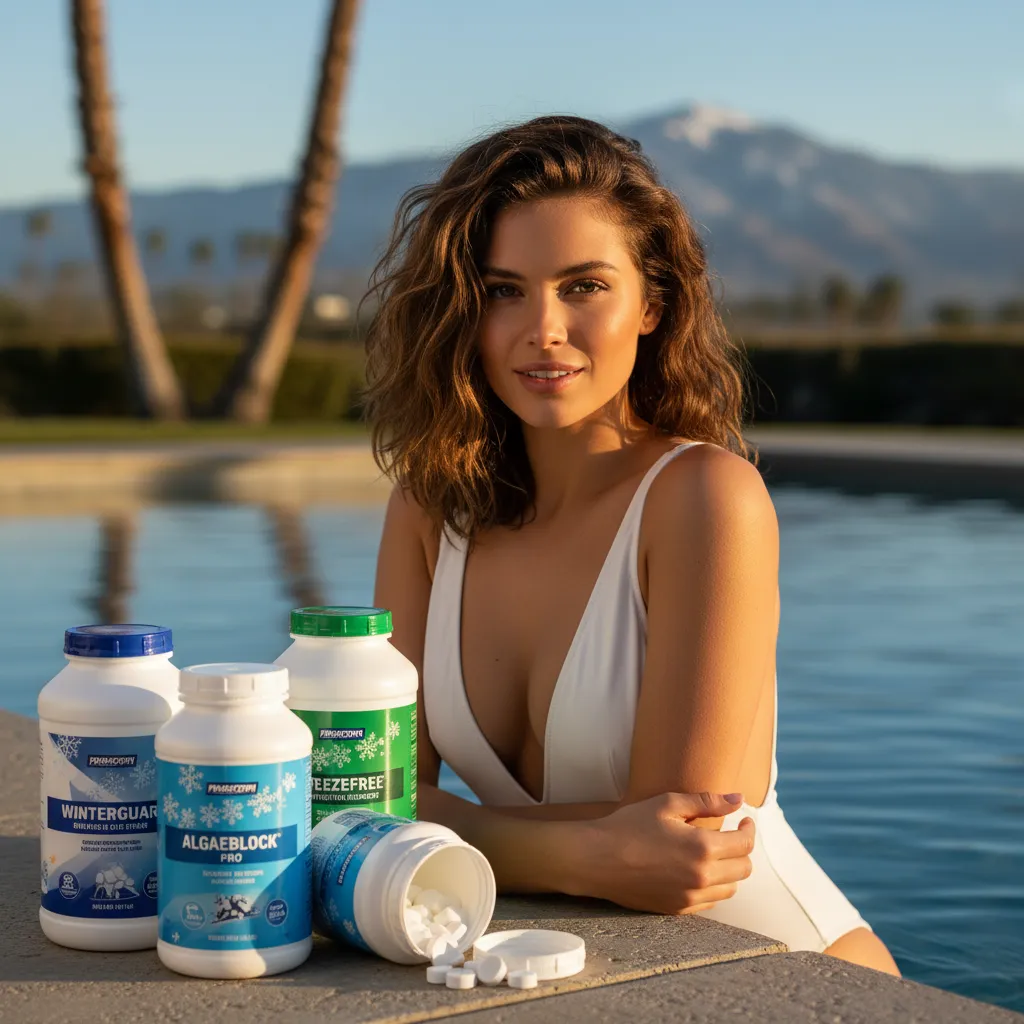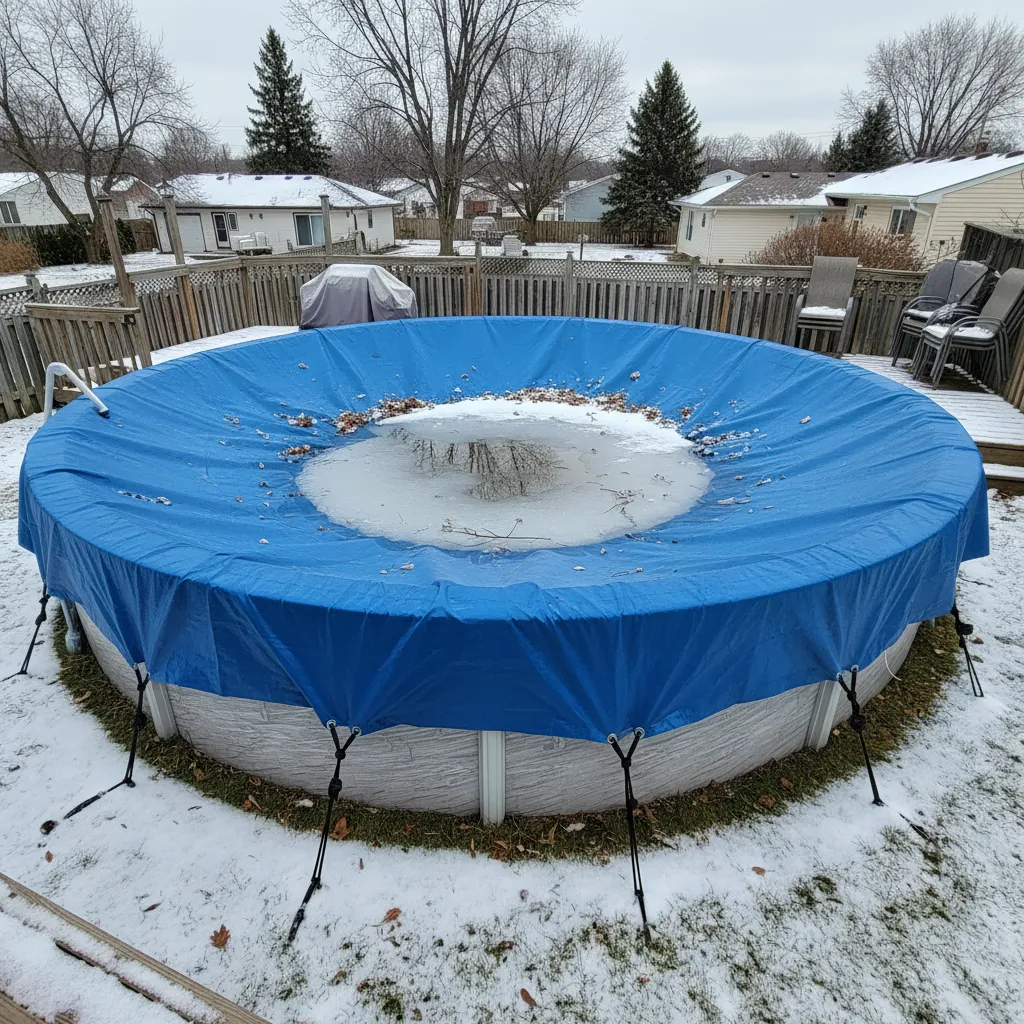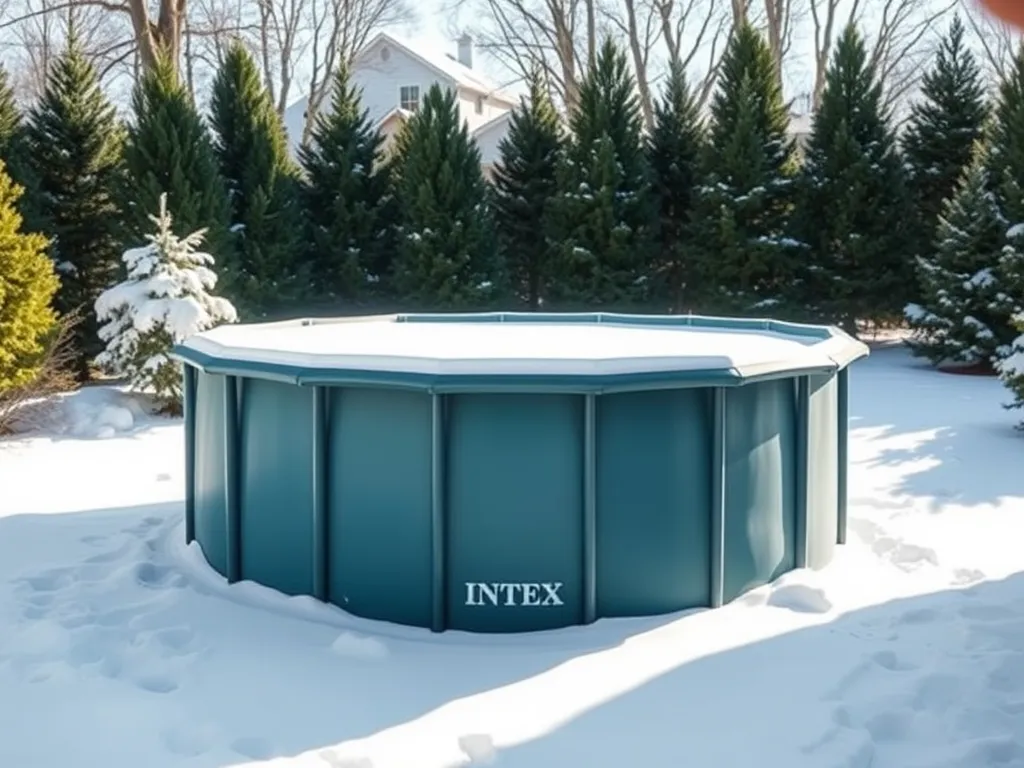Are Pools Cheaper in the Winter?
Published on: November 17, 2025 | Last Updated: November 17, 2025
Written By: Marcus Thornfield
Yes, pool installations and equipment purchases typically cost less during winter months. Lower demand for construction services, vendor discounts of 10-15%, and reduced labor fees create immediate savings compared to peak summer pricing. While winter heating costs may offset some benefits for year-round swimmers, upfront expenses for inground pools, above-ground models, and accessories drop significantly between November and February.
This article breaks down exactly how seasonal timing affects pool ownership costs. You’ll see price comparisons for concrete vs fiberglass pools, winter maintenance requirements, and regional variations from Florida’s mild winters to Minnesota’s deep freezes. Data-driven charts show average savings on installation labor, filter systems, and robotic cleaners during colder months.
Learn why contractors offer flexible payment plans in off-peak seasons and how to negotiate deals on saltwater chlorinators or variable-speed pumps. We’ll also explore hidden costs like frost-proofing above-ground liners or running heat pumps in snowy climates. By the end, you’ll know whether winter pool buying aligns with your budget and lifestyle.
Understanding Seasonal Pool Pricing Trends
Pool prices in winter often reflect predictable market patterns tied to demand, labor availability, and material pricing. Contractors face fewer installation requests between December and February, creating opportunities for buyers to capitalize on seasonal shifts. This seasonal change can lead you to consider different options for enhancing your pool experience. One such option that some people explore is the use of eat pool salt, which can help maintain water balance and improve overall quality.
Crucial Winterizing Products
"The all-in-one solution for a guaranteed clear spring opening."
All-in-One Closing Chemical Kit
Winter demand is high - check stock
"The 'set & forget' option. This is the easiest winterizing I've ever done."
Simple 3-in-1 Winterizing Balls
Winter demand is high - check stock
"Invest once to protect your liner and prevent a swamp in the spring."
Heavy-Duty Winter Pool Cover
Winter demand is high - check stock
Key Factors That Make Winter a Cost-effective Season
Three primary drivers impact winter pricing: installation demand, vendor incentives, and operational costs. These elements combine to create savings of 10-25% compared to peak-season rates.
Low Demand for Pool Installations
Installation requests drop 60-70% in colder months. With fewer projects booked, contractors compete for limited work by offering discounts or waiving permit fees. Fiberglass pool manufacturers may reduce prices by $1,500-$3,000 per unit to clear inventory, while concrete pool crews cut labor rates by 15-20% to maintain workflow. This scenario can lead to a significant decrease in pool installation costs. Homeowners can take advantage of these lower prices, making it an ideal time to invest in a new pool.
Vendor Discounts and Promotions
Suppliers slash prices on pool heaters (10-12% off), vinyl liners ($200-$400 discounts), and filtration systems during winter. Builders frequently bundle services – a $25,000 inground package might include free saltwater upgrades or extended warranties. Major retailers like Leslie’s Pool Supplies historically run “Winter Warranty Weeks” with rebates on maintenance equipment.
Reduced Labor and Material Costs
Lower demand decreases competition for skilled workers, allowing contractors to charge $45-$65/hour versus summer’s $75-$90/hour rates. Material costs dip 5-8% for steel-reinforced concrete, PVC piping, and coping stones due to slowed construction industry activity. Shipping delays also shorten – equipment deliveries average 2-3 weeks instead of 6-8 weeks in peak seasons.
While winter offers upfront savings, seasonal price differences vary by pool type and location. Next, we’ll break down how summer and winter costs compare for installations and long-term ownership.
Winter Vs. Summer Pool Prices
Cold months bring distinct pricing shifts for pool construction and supplies. With lower inquiry volumes from October to March, companies adjust rates to attract clients, creating opportunities for budget-conscious buyers.
Cost Comparison: Installation and Equipment
Installation fees drop 10-15% in winter due to reduced workload for contractors. A fiberglass pool costing $45,000 in summer might run $38,500-$40,500 during off-peak months. Pool pumps, filters, and liners also see discounts – Hayward VS 950 pumps often dip below $1,200 vs. $1,450 in peak season. Supply chain dynamics play a role: polymer prices for vinyl liners typically fall 8% post-holiday season. With these savings, pool owners may want to consider how to maintain their investment effectively. A pool turnover rate calculator can help determine the optimal pump run time for keeping the water clean and safe.
| Item | Summer Price | Winter Price |
|---|---|---|
| Chlorine Tab (50lb) | $165 | $139 |
| Robotic Cleaner | $1,099 | $849 |
| Concrete (per cubic yard) | $185 | $162 |
Long-term Savings From Off-season Purchases
Procuring materials in winter allows for bulk buying without rush fees. Stockpiling R-value insulation boards at $22/sheet (vs. $28 in April) cuts future installation costs. Contractors may include free winterization services ($300-$500 value) with cold-weather signings. Those planning spring openings can lock in chemical rates before annual 7-9% March hikes.

Pool Installation Costs in Winter Months
Ground conditions and staffing impact pricing variations. Frost laws in northern states might limit digging, but southern regions see full-scale work at reduced rates.
Above-ground Vs. Inground Pool Price Differences
Above-ground units gain bigger winter discounts – a $7,500 summer kit often drops to $6,200. Inground projects save on excavation ($1,800 vs. $2,300 summer rates) but require frost-proof plumbing. Fiberglass shell installs run 20% faster in winter with crews working multiple jobs simultaneously.
Typical Installation Timelines
Permit approval accelerates to 2-3 weeks vs. 6-8 weeks in busy seasons. Vinyl liner pools finish in 14-21 days compared to 30+ days during spring rushes. Delays from rain decrease by 40% in arid winter climates. Clear green pools can be achieved by keeping the water clean and balanced. A well-maintained pool not only looks inviting but also promotes enjoyable swimming experiences.
How Payment Structures Change in Off-season
Many firms offer 0% financing for 18 months on winter projects vs. standard 6-month plans. Deposit requirements shrink from 30% to 15-20% for signings from November to February. Some contractors bundle free upgrades – adding a $2,500 salt system might only add $1,800 to total costs.
While cold months offer upfront savings, smart planning for spring start-up costs maintains budget advantages. Up next: balancing these savings with cold-weather maintenance needs.
Also See: How to Close Inground Pool
Winter Pool Maintenance Considerations
Owning a pool during colder months brings unique cost dynamics. While initial purchase or installation might seem more budget-friendly, upkeep demands shift dramatically with dropping temperatures. This change in temperature also affects the growth of algae in the pool. Generally, algae thrive in warmer water, so managing the pool’s temperature is crucial for preventing unwanted growth.
Essential Cold-weather Care Requirements
Freezing conditions force pool owners to adapt care routines. Proper winterization prevents costly repairs while balancing ongoing expenses.
Water Treatment and Circulation
Chemicals remain critical even with reduced use. Chlorine demand drops by 50-70% below 60°F, but balanced pH (7.2-7.8) prevents corrosion. Running variable-speed pumps 4-6 hours daily avoids stagnation without spiking electric bills. Thermal blankets cut heat loss by 70%, reducing evaporation-induced chemical depletion. Lowering alkalinity can further enhance water clarity and balance. One way to achieve this is by using borax, which effectively lowers alkalinity levels in pools.
Equipment Protection Strategies
Pipes burst when water freezes below 32°F, causing $500+ repairs. Blowing out lines with compressed air or adding RV-grade antifreeze ($8-$15/gallon) safeguards plumbing. Removing pump drain plugs prevents cracking. Covering equipment with insulated tarps ($30-$80) shields against ice damage.
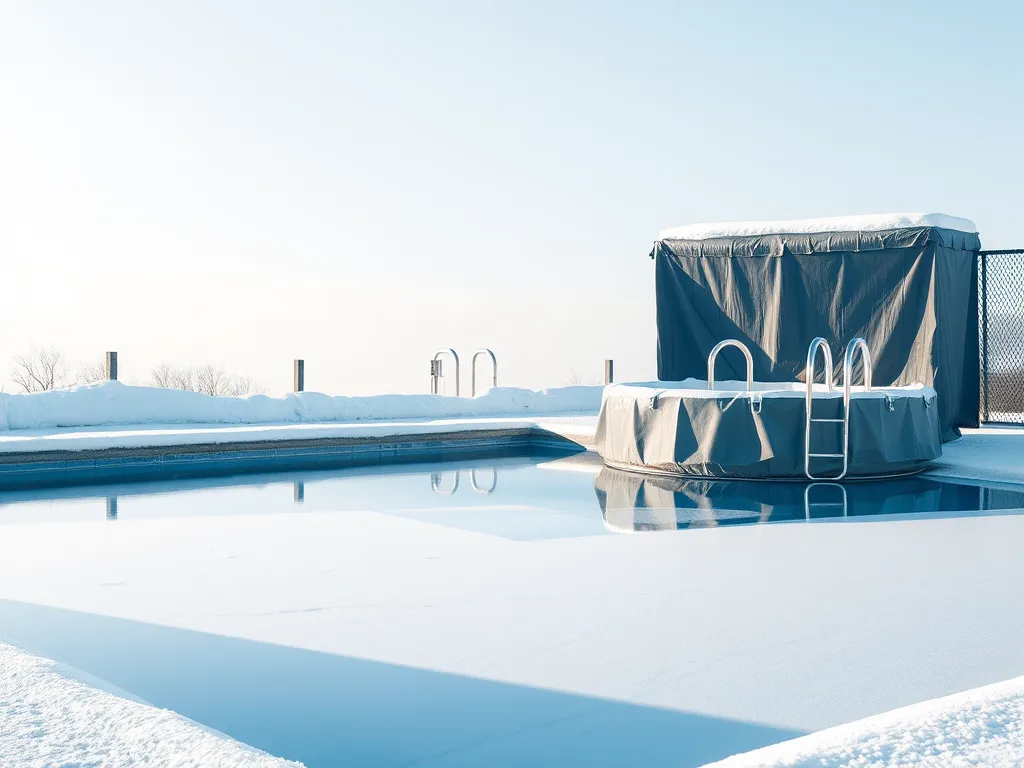
Regional Price Variations in Winter
Geographic location dramatically impacts whether pools cost less during colder months. Southern states see different patterns than northern regions.
Pool Costs in Southern States
Warmer climates allow year-round use but create distinct winter pricing quirks. Labor shortages ease as temperatures dip, often lowering service fees.
Winter Pool Economics in Florida
Floridians save 12-18% on installations November-February. Contractors charge $45-$65/hour vs. summer’s $75-$100 rates. Saltwater systems dominate here, with winter cell replacements costing $200-$400 less due to off-season promotions.
Texas-Specific Pricing Factors
Texans face variable pricing tied to freeze risks. Insulated pool covers jump $50-$75 in December-January. Heat pumps cost $3,500-$5,500 but run 30% cheaper than summer gas heaters during mild winters. Local limestone shortages sometimes spike material costs by 8-10% post-holidays. Taking care of your pool’s alkalinity is also important during these colder months. Adding alkalinity can help prevent damage and keeps your water balanced for the spring season.
Northern Climate Winter Challenges
Snowbelt regions require full winterization costing $300-$800. Permitting delays from frozen ground push spring installations 20-35% higher. Ice-melt runoff damages concrete decks if sealants ($0.30-$0.50/sq ft) aren’t reapplied pre-winter.
Heating Costs and Winter Pool Use
Maintaining swimmable temperatures counters potential savings. The math changes based on system type and frequency of use.
Energy Requirements for Temperature Maintenance
Gas heaters burn 1 therm/hour (100,000 BTU), costing $4-$6 hourly at 2023 rates. Heat pumps use 5kW-$0.15/kWh but only work above 45°F. Solar covers slash heat loss by 50%, requiring 30% less runtime. For 16’x32’ pools, monthly heating bills range $200-$600 depending on climate. Keeping your pool water balanced is also important for reducing costs. Using a soda ash pool calculator can help you determine the right amount of soda ash needed to maintain optimal water quality.
Cost-benefit Analysis Of Winter Heating
Heating four hours daily costs $240-$720 monthly—often negating installation savings. Partial heating (spa only) or swim timing during solar gain hours cuts costs by 40%. Smart thermostats like Pentair IntelliConnect trim bills 15-20% through precise scheduling.
With heating expenses factored in, the next segment explores how vendor incentives during colder months impact overall affordability.
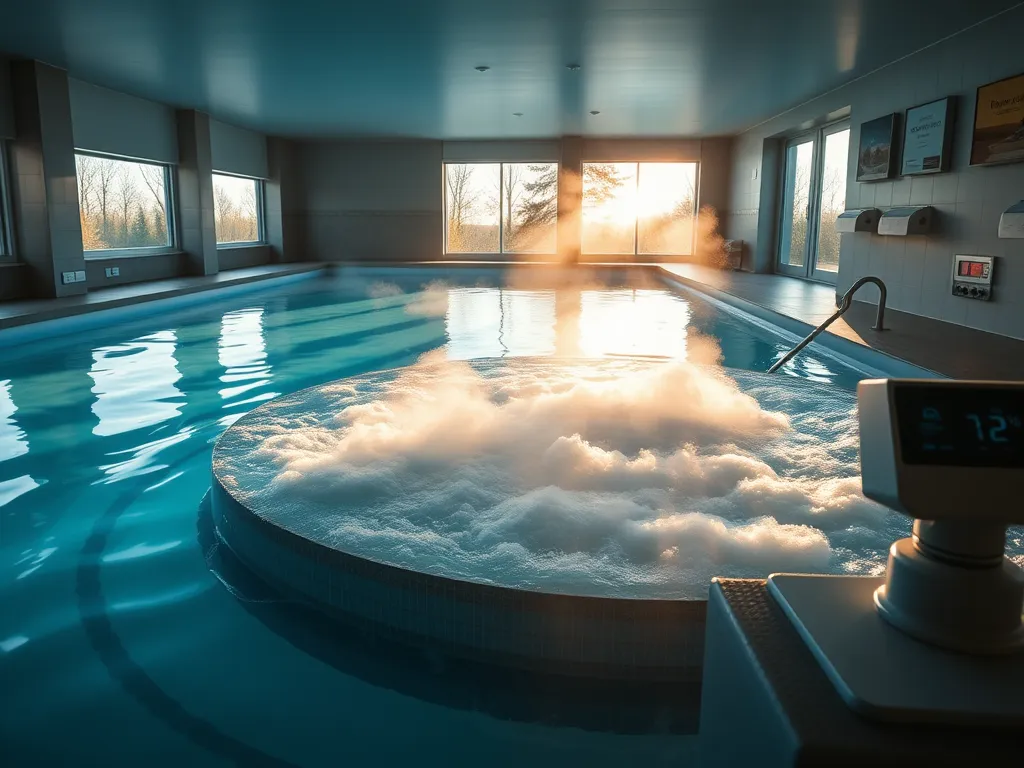
Vendor Discounts and Winter Promotions
Winter months bring unique chances to save on pool buys. With low demand, sellers push deals to move stock and fill work slots. This creates a buyer’s market for both gear and installs. As homeowners prepare for warmer days, it’s important to also consider when pools will be open. Knowing the opening and closing times can help you make the most of your pool season.
Common Off-season Pool Package Deals
Look for these winter offers when hunting for pool deals:
- Full install packs with free steps or covers (save $1,500-$3,000)
- Heater or pump upgrades at 10-15% off summer rates
- Pool + patio combos with price cuts up to 20%
Fiberglass shell makers often run “order now, pay later” plans from Nov-Feb. Vinyl pool sellers may throw in free winter kits with pH test strips and antifreeze.
Negotiation Strategies for Winter Purchases
Use these tactics to get better pool prices in cold months:
- Ask for free add-ons like LED lights or cleaner bots
- Push for 5-7% off quotes by showing comp rates
- Target late Feb deals when vendors clear last year’s stock
Pool firms have less work in winter, so crews may start faster if you haggle. Some will cut labor fees by 8-12% to fill their schedule. Always get three bids to compare winter rates. This is also a good time to think about how to become a pool cleaner yourself. Many people find it a rewarding job that allows for flexible hours and outdoor work.
While winter deals help upfront costs, smart shoppers also check how local weather affects install timelines. Next, we break down how pool prices shift across US regions during cold spells.
Frequently Asked Questions
Are Winter Pool Discounts Available for Eco-friendly Models?
Many vendors offer targeted promotions on energy-efficient pumps, solar heaters, and saltwater systems during winter. These eco-friendly options often see steeper discounts (15-20%) than standard equipment as manufacturers push to meet annual sustainability quotas.
How Does Winter Installation Impact Pool Longevity?
Properly installed winter pools show identical lifespan characteristics to summer builds. Contractors use cold-weather concrete additives and frost-resistant plumbing to ensure structural integrity, though projects in freezing climates may require additional curing time for concrete surfaces. As pool maintenance becomes crucial in these environments, the importance of an effective backwash system comes to light. A long backwash pool can help keep the water clean and clear, making maintenance easier throughout the winter months.
Can Weather Delay Winter Pool Project Timelines?
While winter projects generally face fewer delays than peak-season builds, snowstorms or ground freezes may pause excavation. Reputable contractors include weather clauses in contracts and often allocate buffer days (5-7 extra) to winter schedules at no added cost.
What Winter-specific Equipment Maximizes Ongoing Savings?
Thermal pool covers with 12-16 mil thickness and R-values above 6 provide optimal heat retention. Variable-speed pumps paired with smart timers reduce energy use by 30-40% during colder months when run during daylight hours for solar warmth capture. Proper maintenance also includes regular draining of above-ground pools when necessary. Draining your pool can help prevent damage and ensure clean water for future use.
What Off-season Post-installation Services Should I Expect?
Winter contracts often include complimentary spring start-up services, water chemistry balancing, and equipment tune-ups. Many contractors also provide extended warranty activation dates that begin at first use rather than installation date.
Closing Thoughts
Winter pool installations and purchases often yield significant savings, with discounts ranging 10-30% on materials and labor. Reduced demand creates opportunities for better pricing on everything from excavation to filtration systems. While heating costs require consideration, strategic winterization can maintain efficiency.
Regional differences matter – southern states like Texas and Florida see more consistent winter demand than northern markets. But nearly all areas offer seasonal promotions on pool packages, making winter an ideal time to negotiate.
For precise cost estimates based on your location and pool type, try our My Pool Calculator. Our tools help compare seasonal pricing for installations, equipment, and ongoing maintenance.

